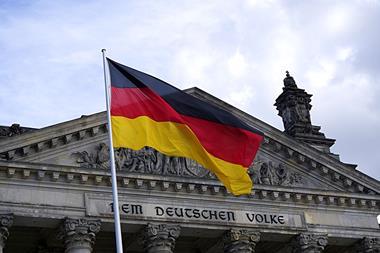Proposed new EU insurance solvency rules could prove disastrous for pension funds in France, and would force them to dump their equities portfolios entirely, says Charles Vaquier, general director of the multi-employer UMR Corem pension fund.
"The main issue for us at this time is Solvency II," says Vaquier. "There are no specific rules for pension funds - just for insurance, so we
are very concerned about it," he says.
Solvency II is a fundamental review of the capital adequacy regime for the European insurance industry, which aims to establish a set of EU-wide capital requirements. The basic principles have been agreed,
but there are differences over implementation, which will not take place until 2010.
"Until now, we had Solvency I, which required 4% of the technical reserves to be held as capital, so when we look at the comparable Solvency II figures, it's clear this has not been properly tailored for the pensions business," says Vaquier.
One of the Solvency II requirements causing the most concern is the requirement for companies holding equities to have enough regulatory capital to withstand a 40% stock market fall in one day.
"We would need an addition of 40% of the value of the equities portfolio," says Vaquier. This capital requirement is even more for some other investments, he says, such as corporate bonds. "Real estate is also considered to be a risk, and private equity as well," he says.
UMR Corem will do what it can to make sure the requirements do not come into force in the way they are worded right now.
"Along with some other colleagues, we are lobbying the French ministry of finance, and the European Parliament to explain that if they approve these rules for pension funds, the result will be that all pension funds will have to sell all their equities portfolios, and give up their corporate bonds," he says.
This is certainly not what the politicians want, he points out, because there are often complaints about the lack of financing for French companies compared with the US, says Vaquier.
However, he is optimistic about the chances of getting the necessary changes made to the Solvency II requirements before implementation.
"We believe we will succeed, if we are very careful and explain to the European Parliament the consequences of the projected change," he says.
Total's pension plan
Five years after it was set up, staff savings are still building up in Total's balanced pension solution. Promoting the plan, and developing membership is a priority, but new pensions legislation has made the whole subject of retirement provision more complicated - and harder to communicate to people within the company.
In fact, coping with the increasingly complex pensions environment in
France is the main challenge right now for Total's scheme, says Pascal Vrillon, compensation and benefit director at Total. "We had the pensions reform in 2003 - the "loi Fillon" - and after that, we have had more than 100 decrees,"
he says.
"It is really difficult to communicate this very complex environment to people inside the company," he says. Nevertheless, there a real necessity to let the staff know about pensions and encourage them to contribute to supplementary schemes, he says.
The Total pension solution consists of two parts - a mandatory life annuity insurance policy or RECOSUP Retraite Collective Supplementaire, which is written by CNP Assurances, and a company retirement savings plan or PERCO.
One way the employer tries to get its message through is by giving each employee a personal remuneration statement each year showing, among other data, all the social contributions that have been made on their behalf.
"In this document, we highlight the PERCO, and we indicate that the employee could put more in and get more matching contributions from the employer," says Vrillon.
"This is one way we can say to an employee who is not participating, that it is in his interests to do so. It's a way for us to develop the membership," he says. So far, 76% of Total's 18,000 employees are enrolled in the retirement savings plan, which now holds between €60m and €63m in investment assets.
As well as the statement, a newsletter dedicated to the pension plan is circulated to staff, and the third issue of this is just about to come out, he says. And the plan's investment manager and third-party administrator, AXA, has online facilities that employees can use to check up on their savings within the plan.
The structure of the PERCO gives the employees various ways of withdrawing their money early, says Vrillon. This flexibility is an important feature, he says, as it keeps the plan in line with other savings instruments that the employees are familiar with. It means that participants in the plan can access their money in the case of disability or some other unexpected event. "They can also use it to buy a flat or house - this is of interest to many employees," says Vrillon.
There is a huge incentive for staff to plough money into the PERCO, as Total matches employee contributions, putting in three times the amount of any contribution, up to a limit of €2,400 a year, when the fixed and variable parts are combined.
IBM pension plan
The investment mix of the IBM France pension plan may be broadened to
include alternatives beyond property, says Didier Wattelle, risk manager and director of the pension fund.
The plan, which is a defined contribution supplementary plan in the form of an insurance contract, is outsourced entirely. Insurance Cy holds the liabilities relating to employee rights, owns the assets and is responsible for the fund management, says Wattelle.
"Presently, it does not use alternatives - real estate excepted," he says. "Other alternatives - private equity, for example - are under study," he adds.
But no decision has yet been made, and there is no target date for it, he says. The advantages of including private equity would be diversification and performance, he says, while the drawbacks of the asset class are a postponed return and volatility.
Any private equity investment would be made through an insurance company mutual fund, he says.
The IBM France plan has two funds, with different levels of guarantee. Fund Number One, with a 4.5% annual performance guarantee, holds 70% of assets in fixed income, 22% in equities and 8% in real estate. Fund Number Two, with a guarantee of 2%, has a 60/40 equity/bond split.
In general, current investment trends have no impact on the investment mix underlying the IBM plan, he says.
"As regards a very long-term plan, strategic asset allocation and benchmark are set in the contract and are not affected by current trends," he says. "Tactical allocation may vary inside limited asset ranges," he adds.
However, asset allocation could be reviewed if one party called for it, he says, as long as IBM, Insurance Cy and the supervisory board agreed to it.












No comments yet